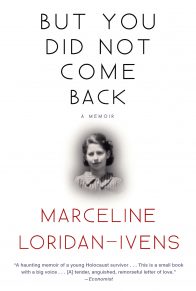The task before us was not just to design an immense complex that linked all the existing terminals but also to create a destination in its own right. It was all about “Singapore meets the world. The world meets Singapore.” To explore the issue, CapitaLand brought in a number of experts from the United States. Ideas were put on the table. All of them were some form of entertainment in the tradition of Disney or Universal Studios theme parks. As we learned later, our competitors all went down this path. One of them proposed a Dinosaur Land.
I had strong reservations about that approach. Themed experiences are usually a onetime thing. They begin to feel dated quickly. Why would a passenger, or for that matter a Singaporean, be attracted to such a place repeatedly? The city had similar offerings already. We needed to come up with a unique concept that appealed to all ages, that appealed to passengers, that was timeless, and that made one want to come back. The idea of a magical garden began to take hold—a garden like no other in the world. I remembered, too, what we had done with the rotunda at Ben Gurion, and realized that we could push the concept much further.
I was imagining a giant dome made of glass and steel, hovering over layers of retail and other required spaces. The largest single feature would be an immense tiered garden, lush with vegetation. The glass dome would be shaped as a toroid, like a donut, so that its surface dipped toward the center, funneling rain—of which Singapore gets a lot. As worked out in the design, the rain would come down as a 130-foot-high waterfall—flowing at 10,500 gallons a minute—and would be recycled and pumped to remain continuous during dry spells. I thought the idea of a garden was appropriate because airports are harsh places. People are tense. If they spend any significant time in an airport, it’s because they’re stuck. A garden would offer relief and regeneration. It could be complemented by many mini-attractions: climbing nets, mazes, and other surprises. Passengers would go to it again and again. So would people from the city who weren’t even intending to fly.
We experimented with the concept, fine-tuning the geometry and details—I have some of the models hanging on my wall at home—but the reality, now known as Jewel, is almost surreal. The dome of Jewel is 650 feet across—five times the diameter of the dome of Saint Peter’s—and supported in a way that seems to make it weightless. When you’re underneath, you have a sense that the force of gravity has disappeared—except that water is falling continually from the top and into the middle of the garden, so powerfully that it creates a mist. It’s as if you’re out in nature, and in fact you are in nature. All the terraces are made of lava stone, designed so the stone itself gradually recedes in visibility, overtaken by trees and other plantings. The flow of the waterfall can be adjusted, like a showerhead. At times the flow seems the most natural thing in the word, as if one has parted leaves in the jungle . . . and there it is! Or some mechanical teeth can be projected into the flow at the top, which has the effect of making the downward flow so smooth that it becomes like a flat-screen TV and can display static or moving images.
* * *
Making Jewel a reality required backroom operations of a very technical nature and of a magnitude that members of the public can scarcely imagine. And that is probably as it should be. The innovative work of the structural engineering firm Buro Happold was essential to the Jewel project. Still, I sometimes get asked how we move from a general concept for a building, maybe scrawled in a sketchbook, to intricate, accurate drawings of a building’s every last detail, down to the level of individual screws. This is, quite literally, the nuts and bolts of architecture.
Think of it as a process of escalating scales, where each scale widens the magnification—or as a camera with a lens that you can telescope. The initial rendering stage, based on knowledge of the building’s purpose and program, gives a general idea of the envelope, the volumes, the relationships. Beyond the concept stage, we sit with the engineers and discuss: wood or steel, welded or bolted. We talk about glazing, about mechanical systems. Slowly there is a determination about each specific question: Yes, we’re going to have air- conditioning, and we’ll put the units in the basement, and the ducts will come up this way, not that way. And we’re going to have windows here and here and here. A better picture of the materiality emerges.
The next phase is called design development. Here we have to figure out and draw, in general terms, how everything is to be fabricated and constructed. If it’s a wood-framed window, we show the frame, the moldings, the glass, the hinges. We begin to understand all the pieces and how they work. And then we assemble them into a building, in the form of plans and a model. This is where the interferences are revealed—when we see how one system sometimes gets in the way of another system. The duct is supposed to go here and turn there . . . until we realize that, for some reason, it can’t. Meanwhile, costs and budgets are assessed and reassessed at every stage, often with the help of professional cost estimators—skilled consultants brought in from outside. In the not-too-distant past, we drew plans, sections, and elevations by hand. These are the three ways of representing architecture. A plan looks at the organization of a building as if seen schematically from above—it shows the footprint. A section shows a building, or some part of a building, as if cut right through and opened up to be viewed. An elevation is what a building looks like on the exterior, from every conceivable angle.
In the modern era, plans, sections, and elevations can be created on a computer, and then the computer will convert it all into a three-dimensional image. One can travel through the 3D image and move about, look this way and that, and see it from outside and above and below—it is virtual reality in action. The software is now so sophisticated that, working independently on the computer, the structural engineer can put in the concrete and the steel, and the mechanical engineer can put in the pipes, and then all the elements come together—at which point that protest about a pipe going through a beam may still be heard. But it can be fixed on the screen, without redrafting everything by hand. And one almost always sees the problem coming in advance. In the old days, it often came on-site, during construction, when someone in a yellow hard hat tapped the architect on the shoulder.
This design-development stage is not the end—not even close. Once one has all the elements in place, defined to the last detail, then the world of the contractors and the fabricators takes over. The fabricators make specific products—a window system, for example—based on a specific technical design. The contractors and fabricators don’t build from the architect’s drawings; they cannot trust those drawings, because the drawings don’t reflect their own fabrication methods. They look at the drawings and then adapt them to their products and hardware systems, producing what are called shop drawings. These are very finely detailed, and are submitted to the architect to check design intent and technical performance. We might look at the drawings and say, We don’t like this because in a high wind it will leak; the wind will drive the water, and there’s nowhere for it to drain out. Or we might not like the size of a window frame, feeling it’s too heavy, and ask the contractor to make it more delicate.
In the case of Jewel, as the center of activity shifted to Singapore, the design team in Boston traveled to Changi to attend coordination meetings involving our Singapore staff and the client. Because of the culture of inclusiveness in Singapore, these were very large meetings—thirty or forty people in the room and a dozen active decision-making participants representing the client team (headed by Lee Seow Hiang, Changi’s formidable CEO) and the design and consulting teams. I, together with Jaron Lubin, who headed the design team in the home office, and sometimes two or three others, as well as Charu Kokate, who heads our office in Singapore, attended each meeting.
When building something very complex, like the curved glass-and-steel roof on Jewel, the process jumps to yet another level. Jewel’s dome holds some nine thousand panels of glass, each weighing upwards of 500 pounds. There is no way we could have designed Jewel’s roof in the traditional way, with drawings on paper. Only computers could handle its complexity. In this new world, the fabricator embraces our 3D drawings and builds upon them. We can communicate from our computer drawing to their computer drawing, and vice versa. The computer can direct the machine that does the fabricating. But just checking the contractor’s drawings is unimaginably time-consuming. For Jewel, this process of intensive review, which was done on a rolling basis as construction was underway, involved ten people in our Singapore office working full-time for four years.
For Jewel, we also built many full- size mock-ups. We built a small section of the dome, roughly thirty feet square, holding several of the glazed panels, to check the marriage of glass and frame, making adjustments and then checking again. We built a four- story-high mock-up, at full scale, of the four-level garden: the terraces, the irrigation systems, the stairs, the railings, the lighting, and every conceivable electronic system. We built mock-ups of the pedestrian tubes that would connect the garden to the terminals. All these mock-ups were so large that we had set aside an outdoor site just for them. We used a warehouse for mock-ups of floor finishes and smaller features. All in all, we built approximately thirty mock-ups of various sizes and complexities.
In parallel, our landscape team, Peter Walker and Partners, based in San Francisco, went into high gear to realize the concepts so elegantly rendered. For Jewel, which called for the planting of two thousand trees and one hundred thousand shrubs from all over the world—120 species in all—this meant countless international trips to select and tag trees and other plants and bring them to Singapore so they could undergo conditioning under tents and in greenhouses before taking their rightful places inside Jewel. Garden maintenance on this scale, indoors, calls for irrigation and fertilization systems, plus good drainage, and also misters and leaf washers to keep the trees fresh and healthy. Another team, Atelier Ten, an environmental consultant, dealt with atmosphere, climate, and sunlight. Plants need enough sunlight to thrive but not so much that they roast. Temperature and humidity need continual monitoring and adjustment. A balance must be maintained between comfort for plants and comfort for people.
Architects who forgo the painstaking supervision and review of shop drawings never get the building they think they’re getting. We need to oversee every phase. In a major undertaking such as Jewel, some forty different consultant teams were involved. On my staff alone, at the home office and in Singapore, perhaps forty people participated in the planning and construction; another sixty-five people came to the project from CapitaLand and Changi Airport. The actual building of Jewel required fifteen thousand shop drawings, twenty-five hundred construction workers, and 26 million person-hours of labor. The design and construction process played out over a period of six years and cost a total of $1.3 billion. Personal involvement with everything, and at all stages, is a lesson I learned first when working with Louis Kahn. The experience of every project since then has reinforced that lesson.
All this unseen work is in the service of something larger than any of the parts. Perhaps the word “magic” deserves another mention. It is a quality that Jewel certainly has. Some 260,000 people visited Jewel on the first day it opened informally, April 17, 2019. These were visitors from Singapore, not air travelers. Two days later, Jewel had 600,000 visitors. Jewel welcomed some 50 million people in its first six months. An art and cultural critic for the Singaporean website Zula wrote that she came to Jewel ready to hate it—another mall! more excess!—only to conclude that Jewel was “a game changer for a tiny city that everyone else around the world thought was a part of China just a year ago.” She acknowledged that seeing the reality made her proud to be a Singaporean. (Actually, she added an emphatic expletive before “proud.”) For a period of time, the pandemic cut air travel to (and through) Changi to 0.5 percent of its typical volume, and at one point the airport was momentarily closed. To experience Jewel when it was empty during this time must have been haunting.
When I show people pictures of Jewel, the reaction is often that they must be looking computer-generated imagery—renderings of something not yet built. There’s a perception of unreality. But they are actual photographs of an actual place, undoctored, unenhanced. What fascinates me about Jewel is the way it hints that there’s a way in which dense urban life can be full of nature—that polar opposites, the city and the garden, can be fused into a singular experience.















